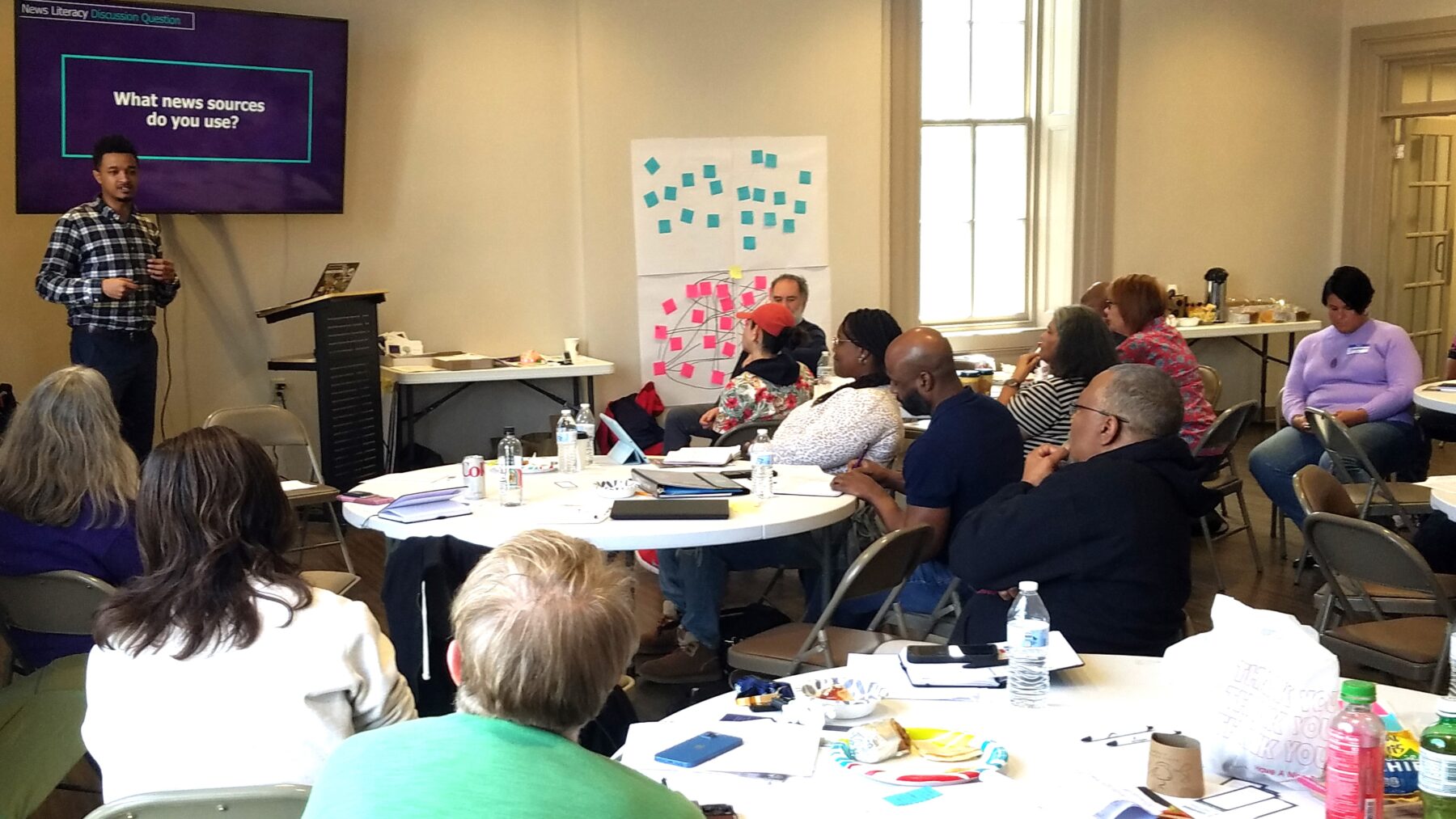How can you recognize misinformation, intentional disinformation and other falsities in the news? Journalists and news audiences alike need media literacy skills so they can develop a critical eye and avoid believing and passing along mistruths. NBCU Academy spoke to three journalists from the News Literacy Project — DeMario Phipps-Smith, Christina Veiga and Dan Evon — on how their nonprofit helps people better navigate the news. The video above and lightly edited comments below share ways to improve media literacy and help news sources regain trust.



What is media literacy?
Phipps-Smith: Media literacy teaches people how to critically evaluate all media messages: advertising, TV, movies, even video games.
Veiga: News literacy falls under the umbrella of media literacy. It’s specifically being able to identify and seek out credible news sources and make sense of the news.
Evon: People are bombarded with information on social media. Being able to sift through what is reliable and what’s not is an extremely important skill. If you’re not careful about the media that you’re consuming, you might develop some opinions that aren’t based on credible information.
How can people improve their news literacy skills?
Phipps-Smith: First, stop and slow down whenever you encounter a claim online and you feel a strong reaction.
Evaluate the source. Is this coming from a reliable, standards-based news organization? Or is this clickbait or a third party that can’t be trusted?
Third, talk to the people in your life about misinformation or things that can be debunked.
What are some tips to spot and stop misinformation?
Phipps-Smith: We have this acronym, “CARES,” to walk people through fact-checking and debunking online claims:
- Context – Is this being presented with the proper information?
- Authenticity – Is this undoctored and unedited?
- Reasoning – Does this present a logic-based argument?
- Evidence – What proof backs up this claim?
- Source – Does this come from a standards-based news organization or something less trustworthy?

How has the media literacy landscape changed?
Evon: People have new tools to spread misinformation, but the ways that we address them are pretty much the same. If you want to find out if an AI image is real or fake, you use the same tactics you would use for an out-of-context photo or video being shared.
I think the most prevalent form of misinformation is out-of-context images. You just add a sentence to an image, and you have a new rumor you can spread. There was an earthquake in Japan recently, and whenever there’s a natural disaster, people share genuine photos from previous events. One of the reasons they do that is they’re just seeking engagement and want to capitalize on the viral trend.
Fabricated screenshots are common. If you encounter an article headline only in an image, always go back to its supposed source. There may not be a link to it because it doesn’t exist. An image of a headline is not a sure sign that it’s fake, but it’s a pretty good indicator that it deserves a little extra scrutiny.
How can news organizations be transparent without getting too much in the weeds about verification?
Veiga: Make sure that all claims are attributed. It’s not enough to tell me that it’s not true. Tell me how you know it’s not true. That sets a standards-based news organization apart from a content creator.
Look for fairness and balance. A lot of headlines today, even from credible news sources, are designed to be attention-grabbing and may lack context. [If you’re writing a headline,] think how this is going to look to somebody who doesn’t know about all your fact-checking, going through records, all the calls you made. Show your work, make sure you’re adhering to standards of fairness and balance and provide context. News organizations aren’t perfect, but those that care about the truth are going to correct it when they fall short. A clear and easily accessible corrections policy [helps media consumers] trust the news more — and spot when news sources are falling short. We encourage people to reach out in those cases and hold news accountable. Viewers should be able to easily reach you or your journalists when something has fallen short of your standards.
More resources from News Literacy Project
• National News Literacy Week
• National NewsLitCamp®️: Trust and Credibility – Videos
• RumorGuard – Examples of misinformation
• News literacy tips, tools and quizzes
• Checkology – Free e-learning platform on media literacy
• “Get Smart About News” – Newsletter
• “Is That a Fact?” – Podcast
• NewsLitNation – Educator network



